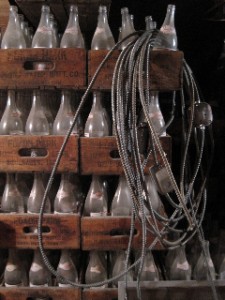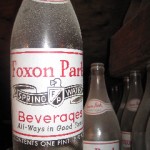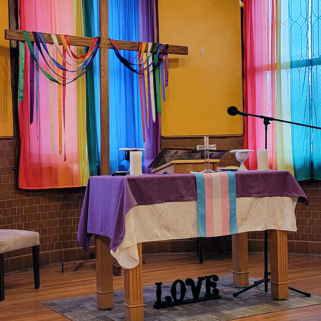
The invention of root beer predates our nation. Native American warriors during the French and Indian War carried sugar and ginger to flavor their water. Hardy White Mountain backwoodsmen sustained themselves with maple sap boiled with spruce twigs. Even 250 years later, the recipe isn’t too different. At Foxon Park, a small family-owned soda manufacturer in East Haven, the Naclerio family has combined syrup with sugar, water, preservatives, and carbon dioxide in the same formula they’ve used since 1928.
Foxon Park’s customers are loyal. Locals grow up eating apizza and drinking Foxon Park in Wooster Square. Coca-Cola Co. has come sniffing around their turf, their pubs, and their production facility a few times, explains Jay Brancati, manager of daily operations and an in-law of the Naclerios, but the people of New Haven know what they will drink. He adds, bemusedly, that Foxon Park often recieves fan mail—love letters, truly. “I drive down the road and people scream and give me the thumbs-up.” Brancati shakes his head. “I don’t know why people get so worked up about it—it’s just soda.”
People love root beer not only for its flavor, but also for the impressions it evokes. Foxon Park operates on this emotional power—its sodas taste of the past. But is it possible for us, in sipping an earth brew, to tap into the collective memory of the past, to think back beyond our own experiences? Can we drink in the history of our worn northeastern mountains and the bright chill of facing a new land?
Foxon Park operates out of two small warehouses. Dressed mostly in navy Foxon Park sweatsuits, seven men work there, loading cases and ducking around bottling machines.

Foxon Park began with the freshwater spring that still flows out back. There, in 1922, Jay Brancati’s great-grandfather-in-law, Matteo Naclerio, founded a mineral water company that became the soda brand in 1928. Brancati and his men still use the spring to bottle Foxon’s 17 flavors of soda, which include the root beer and best-selling white birch beer, sold in glass twist-top bottles. The company belongs to the family and they work hard to make sure it stays that way. “I’m working every day like a schmuck, just trying to keep it going for our children’s children,” Brancati told me in the upstairs office, next to his daughters’ playroom.
In the last five years, Brancati has expanded Foxon Park’s market, cultivating contacts in Long Island and San Diego. But the company’s reach seems to transcend its official domain. A fan in Las Vegas recently sent a photo to Brancati of a Foxon Park bottle in the City of Sin, hundreds of miles from any of their distribution points. To increase business, Brancati also created a Facebook page and website, through which customers across the country can order Foxon Park soda. From across the small conference table above his production facility, Brancati said, “We use the same distributor as Budweiser.” The white Foxon Park trucks that once trolled the streets like milk vendors, selling their bottles door-to-door, now sit idly in the parking lot. Only a few fanatic locals still receive personal deliveries from the men on Foxon Boulevard.
Brancati encourages me to sample a few brews. Foxon Park’s white birch beer explodes with a tang and far outstrips the soft caramel tone of root beer. In it, I taste late-spring mornings, just as the thaw comes to the Northeast, and think of birch twigs snapped by cold fingers, chewed past their fraying point. But unlike birch or spruce beer, root beer is composed largely of flavoring from the sassafras and sarsaparilla plants with an extensive list of secondary ingredients that ideally meld to produce a complex, spicy, earthy, and frothy beverage. Foxon Park’s flavors are created in extract form by companies around New York, the same companies the Naclerio clan has always worked with. Brancati is hesitant to discuss flavor, however—the ratio of the requisite herbs is a valued secret.
Inspired by the Naclerios, I decided to try brewing my own root beer. I ordered the flavor syrup and ale yeast, and set up shop in the Davenport student kitchen. The process was simple—boiling and mixing—but it took some time to diligently sanitize my materials with boiling water. The yeast fermented for two days, and after a chill-down to stop the chemical reaction, I twisted off the cap of a bottle that once held two liters of Fresca and sniffed my first batch of root beer.
Root beer nips your mouth a little. It feels fresher, hardier, more demanding than Coca Cola. My home-brewed version is rounder and softer than Foxon Park’s, whose peppermint tang lingers even after the bottle is slurped dry. But it’s not just the taste that lingers—it’s the impression of an older, quieter New Haven, the wonder of a wilder New England and a yet undiscovered continent.


